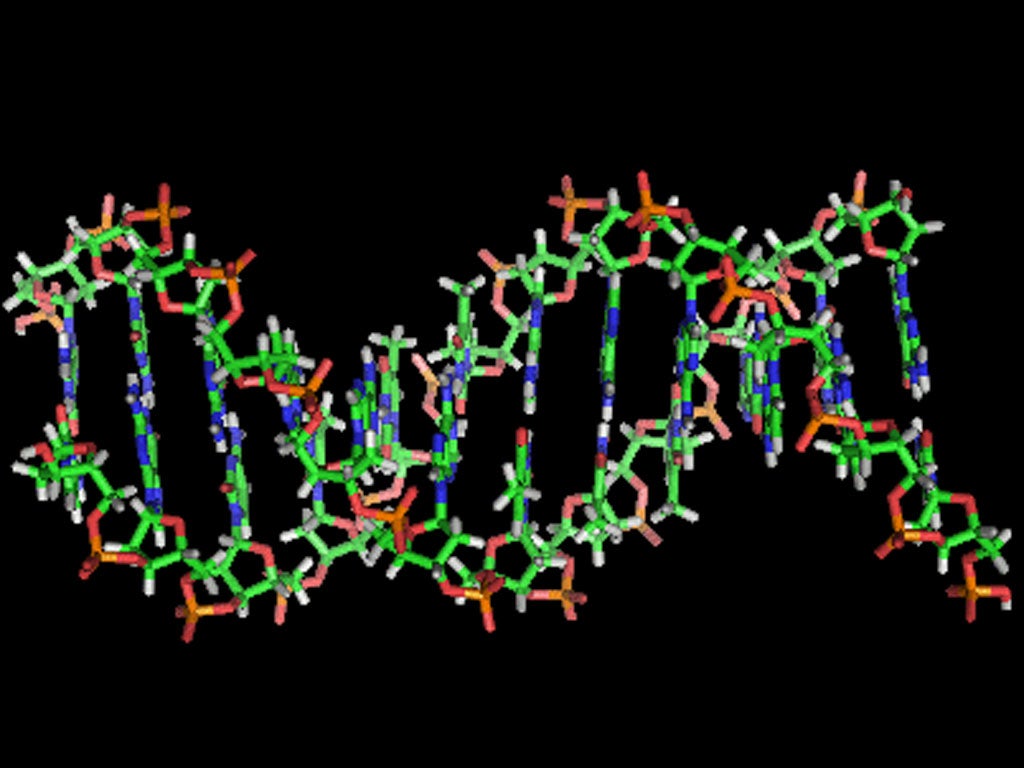Scientists debunk 'junk DNA' theory to reveal vast majority of human genes perform a vital function

Your support helps us to tell the story
From reproductive rights to climate change to Big Tech, The Independent is on the ground when the story is developing. Whether it's investigating the financials of Elon Musk's pro-Trump PAC or producing our latest documentary, 'The A Word', which shines a light on the American women fighting for reproductive rights, we know how important it is to parse out the facts from the messaging.
At such a critical moment in US history, we need reporters on the ground. Your donation allows us to keep sending journalists to speak to both sides of the story.
The Independent is trusted by Americans across the entire political spectrum. And unlike many other quality news outlets, we choose not to lock Americans out of our reporting and analysis with paywalls. We believe quality journalism should be available to everyone, paid for by those who can afford it.
Your support makes all the difference.The genetic “control panel” of the human body that regulates the activity of our 23,000 genes has been revealed for the first time in a scientific tour de force that could revolutionise the understanding and treatment of hundreds of diseases.
Scientists have once and for all swept away any notion of “junk DNA” by showing that that the vast majority of the human genome does after all have a vital function by regulating the genes that build and maintain the body.
Junk DNA was a term coined 40 years ago to describe the part of the genome that does not contain any genes, the individual instructions for making the body’s vital proteins. Now, this vast genetic landscape could hold hidden clues to eradicating human disease, scientists said.
Hundreds of researchers from 32 institutes around the world collaborated on the immense effort to decipher the hidden messages within the 98 per cent of the human genome without any genes and was thought, therefore, to have no function.
They have concluded in a series of 30 research papers published simultaneously today, in Nature, Science and other journals, that this so-called junk DNA is in fact an elaborate patchwork of regulatory sequences that act as a huge operating system for controlling the genome.
Knowledge gained from this important insight, which has been largely hidden from view ever since the structure of DNA was revealed nearly 60 years ago, will prove critical to the future treatment of more than 400 diseases, scientists said.
Ewen Birney of the European Molecular Biology Laboratory in Cambridge and one of the leaders of the international ENCODE consortium said the work has demonstrated conclusively that more than 80 per cent of the genome works as a kind of control panel packed with genetic dials.
“Our genome is simply alive with switches: millions of places that determine whether a gene is switched on or off,” Dr Birney said.
Deciphering the human genome revealed that less than 2 per cent of the 3 billion building blocks of human DNA actually consists of working genes. The ENCODE consortium has shown that the rest of the genome still has an active, biochemical function in the cells of the body.
“We see that 80 per cent of the genome is actively doing something. We found that a much bigger part of the genome - a surprising amount in fact - is involved in controlling when and where proteins are produced,” he said.
Defects in this part of the genome could be responsible for a range of illnesses, from diabetes and Crohn’s disease to disorders of the immune system, such as lupus. Knowing about them could lead to a fundamental reappraisal of what goes wrong in scores of difficult conditons, said John Stamatoyannopoulous of Washington University in Seattle, another leader of the consortium.
“Genes occupy only a tiny fraction of the genome, and most efforts to map the genetic causes of disease were frustrated by signals that pointed away from genes,” Professor Stamatoyannopoulos said.
“Now we know that these efforts were not in vain, and that the signals were in fact hidden in millions of locations around the genome. The findings provide a new lens through which to view the role of genetics and genome function in disease,” he said.
Many of the genetic switches occur at sites on the long DNA molecule that are well away from the genes they control, which has hampered past attempts at identifying them. The new work exposes these hidden connections and lays bear the inner workings of the body’s genetic control panel, the scientists said.
“This is a major step toward understanding the wiring diagram of a human being [and] helps us to look deeply into the regulatory circuit that tells us how all the parts come together to make a complex being,” said Professor Michael Snyder of Stanford University in California and a principal investigator on the ENCODE project.”
Join our commenting forum
Join thought-provoking conversations, follow other Independent readers and see their replies
Comments